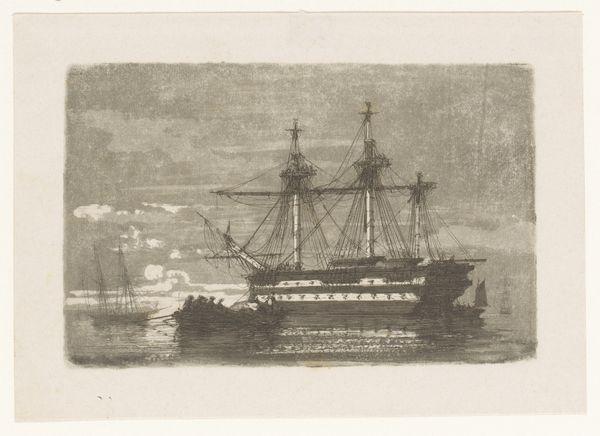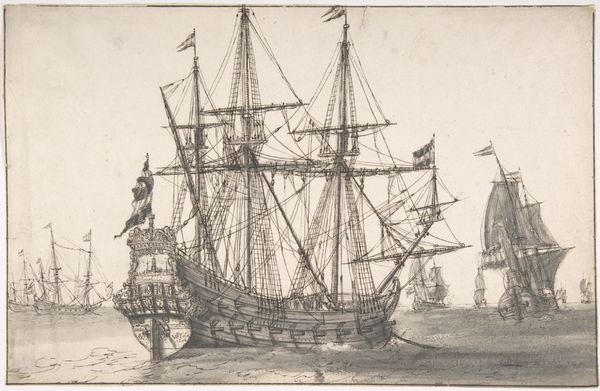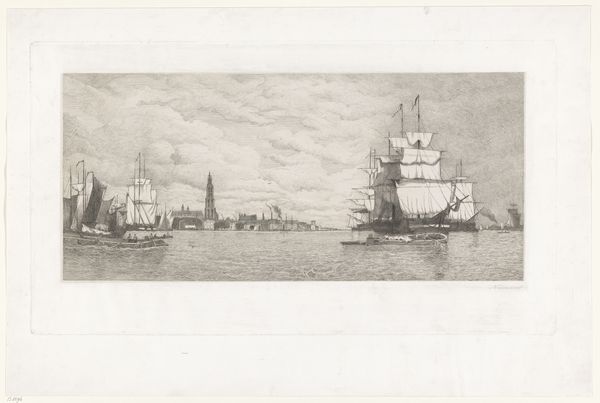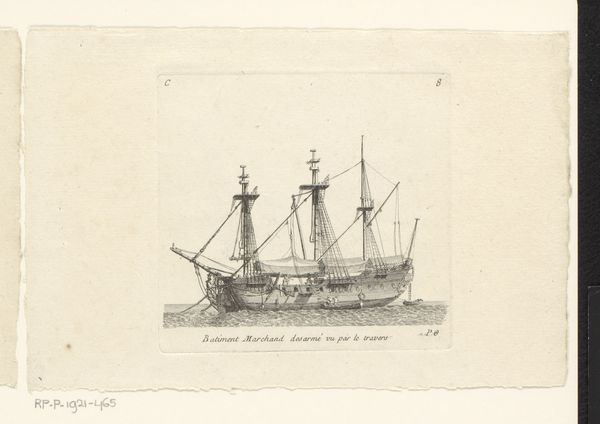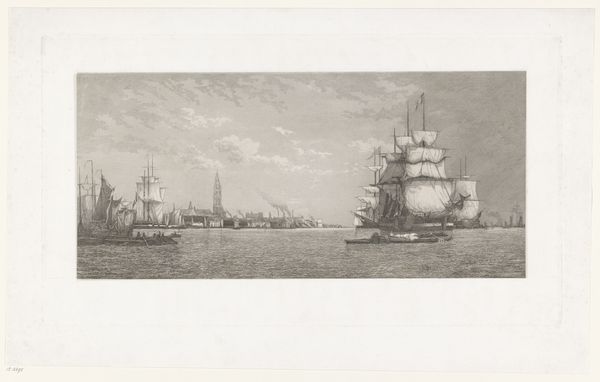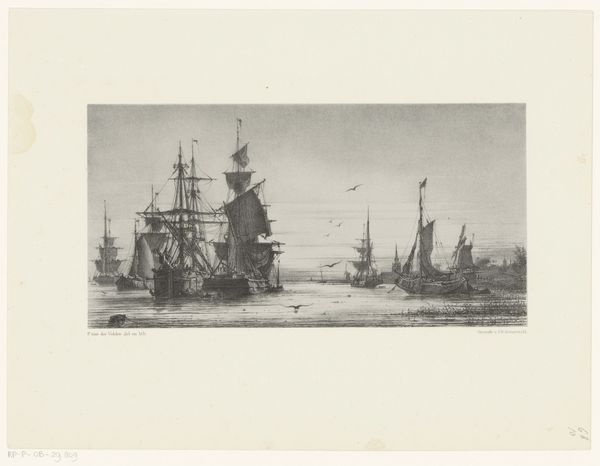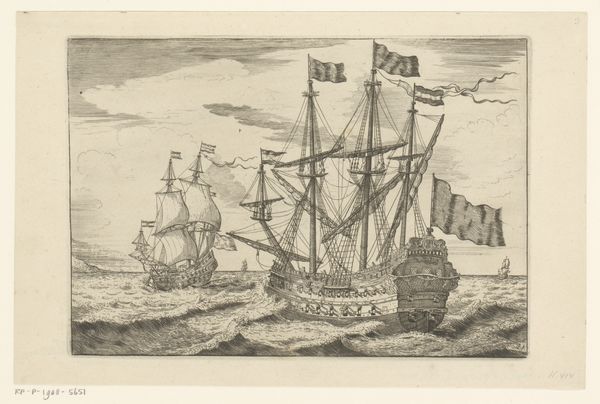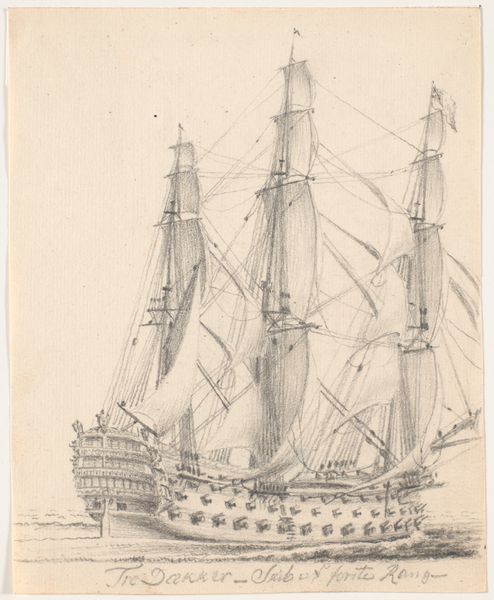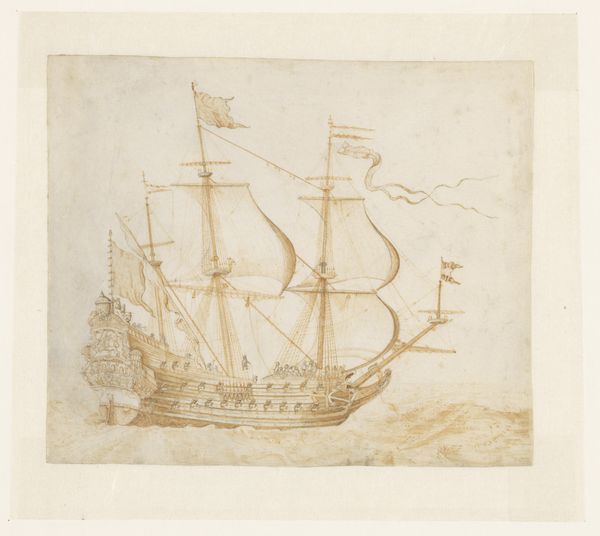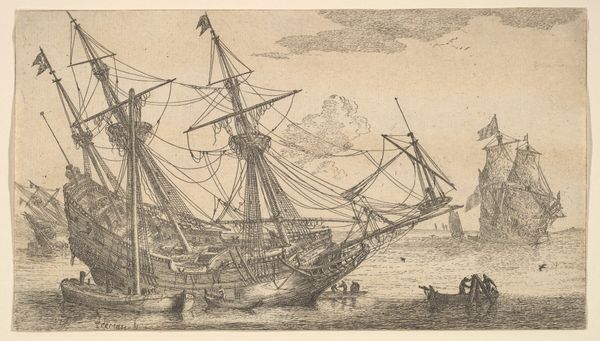
print, etching
# print
#
etching
#
landscape
#
etching
Dimensions: height 81 mm, width 128 mm
Copyright: Rijks Museum: Open Domain
Henri François Schaefels made this delicate etching of a three-masted warship sometime in the 19th century. The etching process is key to understanding the image. Schaefels would have covered a metal plate with a waxy, acid-resistant ground. He then scratched an image into the ground with a needle, exposing the metal beneath. When dipped in acid, the exposed lines would be etched into the plate. This painstaking process results in the kind of fine, detailed lines we see here, especially in the rigging of the ship. Consider how this meticulous process contrasts with the industrial might represented by the warship itself. Etching is a craft-based practice, demanding careful skill, whereas the ship speaks to larger-scale economic and political forces. The image captures a moment of transition, where handcraft and industrial power coexisted, each informing the other. Looking closely at the printmaking process helps us to reflect on social and economic contexts, and to appreciate the amount of work involved in its production, which moves beyond traditional definitions of fine art.
Comments
No comments
Be the first to comment and join the conversation on the ultimate creative platform.
